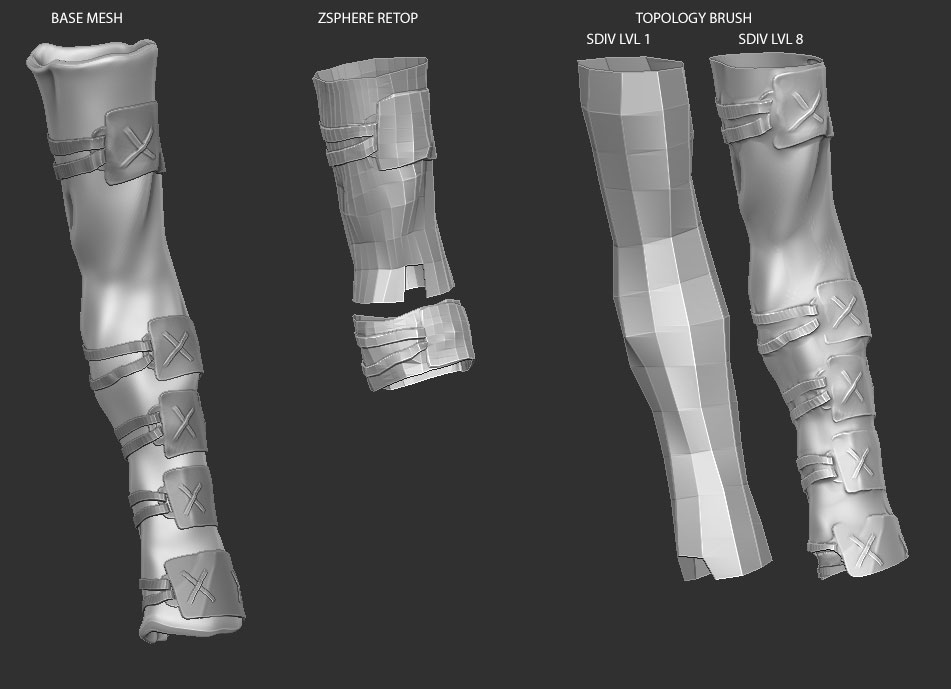Hi guys, having a hell of a time getting this done for school on time. I could really use some direction here. (you respond faster than my teacher 
Ok, I have this sleeve I need to retop and uv for game. The base mesh on the left is separate subtools, the sleeve, each strap and each leather arm guard.
At first I started to a zsphere retopology where I started to include all that detail. I’m still pretty new to this so it took a really long time just to get what you see here. I started to get concerned that even I finished, it might be overkill.
So I stepped back and dropped some quick topology brush curves on just the sleeve portion, sub-divided and projected until I got what you see on the right. As you can see a lot of the tiny details are not coming through.
At this point I’m just kinda lost at how I should go about this. Any advice would be huge!
Thanks.
Attachments
